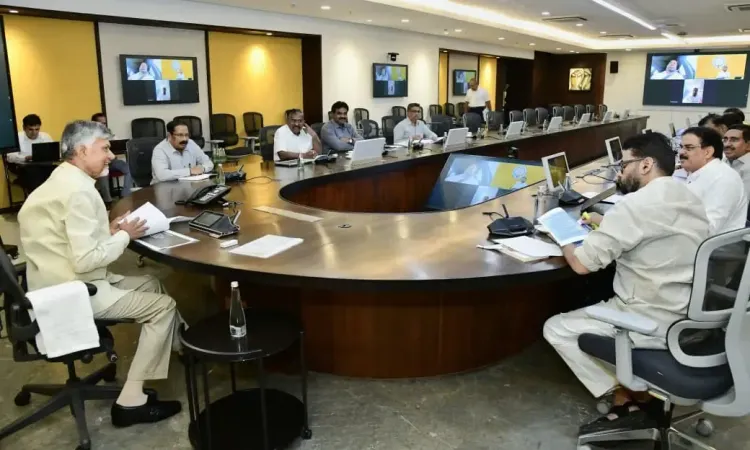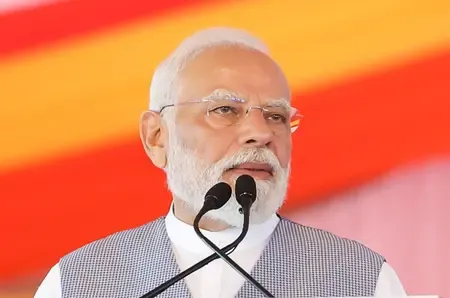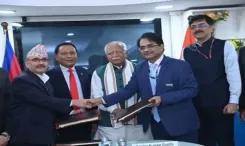How Will Andhra Pradesh CM Nara Chandrababu Naidu Fulfil the People's Aspirations Through District Reorganisation?

Synopsis
Key Takeaways
- The reorganisation of districts aims to fulfill citizen aspirations.
- Six new districts are proposed, increasing the total to 32.
- Addressing issues from previous administrations is a key priority.
- Involvement of various stakeholders ensures diverse perspectives are considered.
- Future meetings will continue to refine the proposals.
Amaravati, Oct 28 (NationPress) Andhra Pradesh Chief Minister Nara Chandrababu Naidu stated on Tuesday that the reorganisation of districts in the state must align with the aspirations of the populace and enhance administrative efficiency.
The Chief Minister emphasized the necessity to address issues that emerged from the previous government's district formations while ensuring that new challenges do not arise.
Naidu convened a review meeting with both ministers and officials regarding the district reorganisation.
On July 22 of this year, the state government established a seven-member ministerial subcommittee dedicated to district restructuring.
This review meeting at the state Secretariat included Deputy Chief Minister Pawan Kalyan and subcommittee ministers Anganai Satya Prasad, P. Narayana, Nadendla Manohar, Satyakumar Yadav, V. Anitha, Nimmala Ramanaidu, and B.C. Janardhan Reddy.
The ministers briefed the Chief Minister that a preliminary report was compiled with inputs from ministers, district collectors, local representatives, and the public.
According to reports, the subcommittee has suggested the establishment of six new districts, increasing the total to 32.
Following the 2014 bifurcation, Andhra Pradesh was left with just 13 districts, which the previous YSRCP government expanded to 26 in 2022.
The Chief Minister engaged in discussions with ministers and senior officials to rectify the unscientific formation of new districts by the former government. He also revisited the electoral commitments regarding district reorganisation and the establishment of new revenue divisions.
Naidu expressed concerns that the previous government’s poorly thought-out decisions led to regional disparities, as they did not consider the aspirations of the citizens. He urged the subcommittee to approach district reorganisation with an awareness of constituency delimitation and suggested that the restructuring of revenue divisions be handled separately.
He requested an analysis of which revenue ward and constituency residents of the affected mandals would belong to after the completion of the Polavaram project. The reorganisation should reflect this.
The Chief Minister noted that the creation of Markapuram district has been a longstanding aspiration of the local community. The ministers shared their insights and the viewpoints of the various stakeholders.
A subsequent meeting is scheduled for next week to continue discussions on the proposals, Naidu added.









